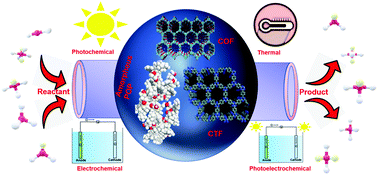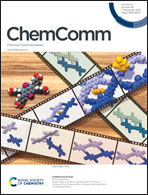Presenting porous–organic–polymers as next-generation invigorating materials for nanoreactors
Abstract
Porous organic polymers (POPs) represent an emerging class of porous organic materials which mainly comprise organic building blocks that are interconnected via strong covalent bonds, thereby offering highly cross-linked frameworks with rigid structures and specific void spaces for accommodating guest molecules. In the past few years, POPs have garnered colossal research interest as nanoreactors for heterogeneous catalysis (thermal, photochemical, electrochemical, etc.) because of their intriguing characteristic features, such as high thermal and chemical stabilities, adjustable chemical functionalities, large surface areas, and tunable pore size distributions. This feature article provides an overview of existing research relating to diverse POP synthetic approaches (COFs, CTFs, and some amorphous POPs), the possible modification of the functionality of POPs, and their exciting application as next-generation nanoreactors. These POPs are extremely interesting, as they offer the potential for either metal-free or metalated polymer catalysts allowing photocatalytic CO2 reduction to solar-fuel, biofuel upgrades, the conversion of waste cooking oil to bio-oil, and clean H2 production from water, addressing many scientific and technological challenges and providing new opportunities for various specific topics in catalysis. Finally, we emphasize that the integration of various synthetic approaches and the application of POPs as nanoreactors will provide opportunities in the near future for the precision synthesis of functional materials with significant impact in both basic and applied research areas.



 Please wait while we load your content...
Please wait while we load your content...